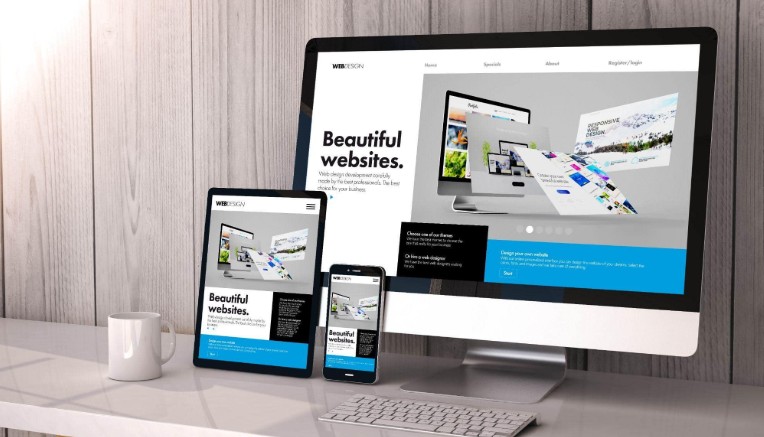Creating an impactful portfolio website has become a necessity for UK professionals, creatives, and entrepreneurs who want to stand out in today’s competitive digital landscape. In this comprehensive guide, we explore every aspect of how to create Website for a Portfolio. From the early stages of planning and design to development, launch, and ongoing support. We discuss the essential steps, provide valuable tips, and include interactive elements such as tables and bullet points for clarity, ensuring the content remains engaging and current.
Introduction: The Importance of a Portfolio Website
A portfolio website serves as the digital face of your professional persona. It is not just a static gallery of past work; it’s a dynamic platform that demonstrates your skills, vision, and creative journey. For audiences in the UK, showcasing a standout online portfolio can:
Enhance your brand
- Boost job opportunities and freelance engagements
- Act as a primary platform to highlight accomplishments and share testimonials.
- Assist you in building connections with prospective clients and partners.
In an era where first impressions are often made online, knowing how to create Website for a Portfolio. Correctness is crucial. In today’s guide, we break down the process into clear, actionable steps.
What are the step-by-step guidelines for Creating Your Portfolio Website?
1. Planning and Research
Before diving into website design, it’s essential to map out your website’s purpose and target audience. Consider the following:
- Define Your Objectives:
What should your website achieve? Whether it’s to land a job, secure freelance projects, or simply showcase your work, clarity is key. - Identify Your Target Audience:
Understanding who will be visiting your site—recruiters, potential clients, or industry peers—will help tailor the design and content accordingly. - Competitive Analysis:
Research existing portfolio websites, especially within your field, to identify design trends and functionality that resonates with UK audiences.
2. Designing the Website

The design stage involves both aesthetics and user experience. Here are the key considerations:
- User-Centric Design:
Ensure your design is intuitive. Navigation should be smooth, with a clear menu structure. - Responsive Design:
Your site must be mobile-friendly. With the growing number of mobile users in the UK, a responsive design is non-negotiable. - Visual Appeal and Branding:
Incorporate your personal brand, including logos, specific colour schemes, and typography that reflect your personality and professionalism.
What Should Your Design Prioritize?
- Clarity:
Avoid clutter and focus on presenting your work in an organized manner. - Consistency:
Maintain consistent styling across all pages. - Accessibility:
Ensure your website meets accessibility standards, making it usable for everyone.
3. Development Process
When building the website, decide whether to go the DIY route with website builders or to hire a developer:
- Website Builders:
Platforms like Wix, Squarespace, or WordPress offer customizable templates and require minimal technical skills. - Custom Development:
If you have specific needs or a unique vision, hiring a web developer might be the best option. This approach provides greater control over features and functionality.
Table summarizing the comparison between website builders and custom development:
| Method | Advantages | Considerations | Ideal For |
| Website Builders | – User-friendly- Quick setup- Budget-friendly | – Limited customization- Template-based design | Beginners or those on a tight schedule |
| Custom Development | – Fully customizable- Scalable- Unique design | – Higher cost- Longer development time | Professionals with specific, advanced requirements |
4. Content Strategy and SEO

To attract UK audiences and improve search engine rankings, your portfolio website needs compelling content and an optimized structure:
- Copywriting:
Write clear, engaging descriptions of your projects. Share your story and highlight the contributions you made to each project. - SEO Optimization:
Use keywords such as “How to Create Website for Portfolio?” at strategic points like headings and introductory paragraphs. Remember to include meta descriptions, image alt text, and internal links. - Visual Content:
Incorporate high-quality images, project snapshots, and even videos. A mix of media keeps visitors engaged.
5. Launch and Beyond
Once the design, development, and content creation are complete, the next step is to launch your website. Follow these best practices:
- Testing:
Make sure to test your website on various browsers and devices before launching it. Look for any broken links, loading issues, or responsiveness problems. - Maintenance:
A portfolio website is a living document. Regularly update it with new projects, blogs, and testimonials. Maintenance is key for ongoing relevance. - Analytics:
Integrate tools like Google Analytics to track visitor behaviour and measure engagement. This data can provide insights to further optimize the user experience.
How Does One Ensure a Website Stands Out in Today’s Digital Arena?
In response to this common question, consider the following innovative strategies:
- Personalization:
Tailor your content and design to reflect your unique skills and identity. - Interactivity:
Use interactive elements like contact forms, social media integrations, and dynamic project showcases. - Professional Touch:
Ensure every detail from typography to navigation mirrors your professional standard.
Enhancing Your Portfolio Website’s Engagement
Engaging Visual Elements

Incorporate charts, tables, and minimal bullet points to make your site visually attractive:
- Charts and Tables:
Use these to compare project metrics or feature timelines. The previously mentioned table is one example. - Minimal Bullet Points:
They help in breaking down information without overwhelming the reader.
Integrating Social Proof
Showcase testimonials and case studies:
- Client Testimonials:
Display reviews that speak to your capability. - Project Case Studies:
Detail project challenges, your solutions, and the outcomes.
Conclusion
Building a portfolio website is a journey that requires thoughtful planning, creative design, and a commitment to regular updates. This comprehensive guide on how to create Website for a Portfolio? Build It Right Today! Provides actionable insights for every stage—from ideation to launch and maintenance. With the strategic inclusion of keyword optimization, modern design elements like responsive tables, and interactive components, your portfolio website will not only impress but also drive meaningful engagement among the UK audience.
FAQs
What is the first step in building a portfolio website?
The first step is meticulous planning—defining your objectives, identifying your target audience, and researching competitors.
How important is SEO for my portfolio site?
Extremely important. SEO ensures your website ranks well in search results, thereby increasing visibility among potential employers or clients in the UK.
What maintenance is required after the website is launched?
Regular content updates, security checks, performance analytics, and periodic design reviews are essential to keep your website relevant and engaging.






